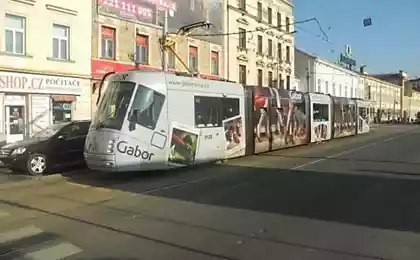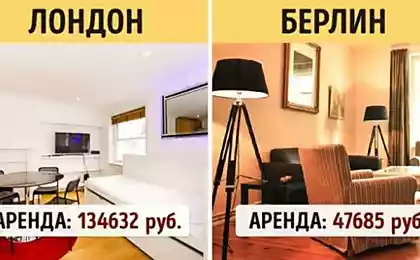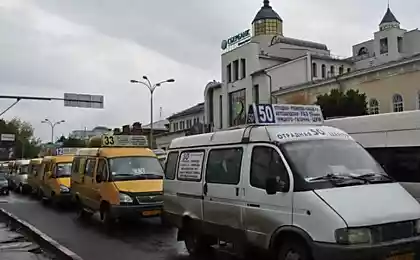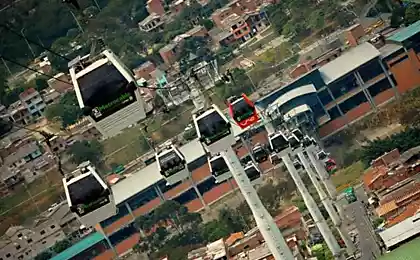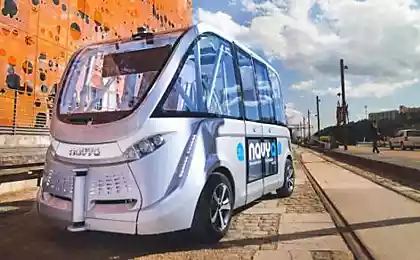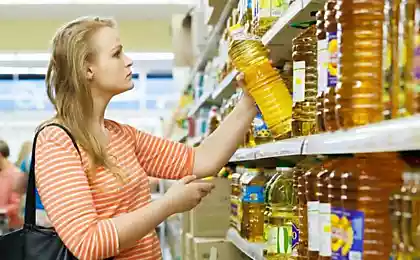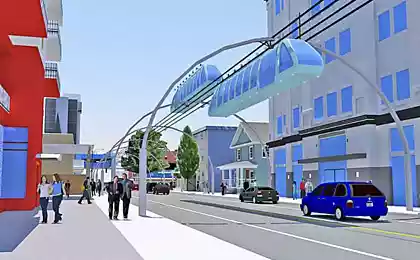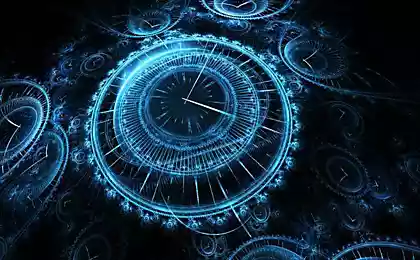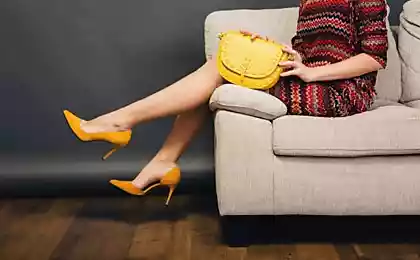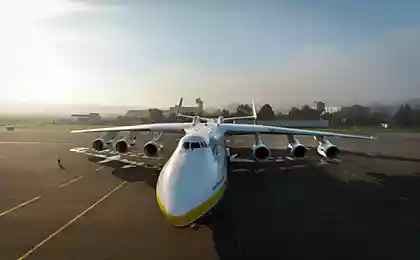1051
Directed transport on the bus go
Today I'll tell you about a relatively new type of public transport, which unites both the advantages and disadvantages of several species (and sometimes even able to operate in different modes).
So. Throughout the world, it is traditionally called "translohr" - in honor of the company, which has made this form of transport known. Interestingly, the company Translohr was not the discoverer of this exotic transport system.
Construction of the first system of this type of transport began in mid-1999 in the French city of Nancy. Inauguration of the system was held on 8 December 2000, but due to technical defects of the regular passenger transport only began in February 2001.
It will be about 20 photos, the source.
Bonus - the metro, you are unlikely to have seen
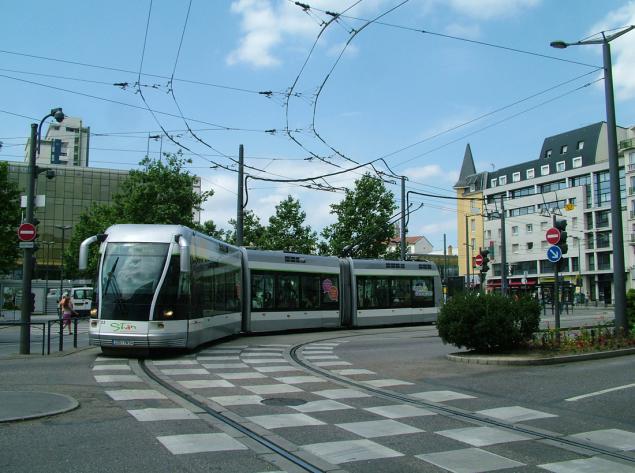
The idea of the system is that the narrow streets of the center of the huge machines are sent to a particular path by the guide rail at the center of

On the outskirts of the trolley is a regular
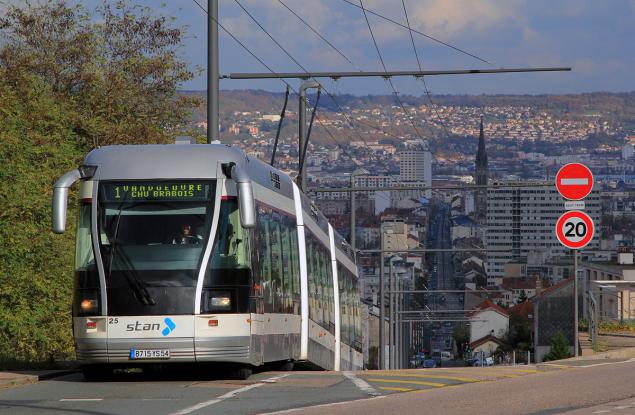
The transition from the normal mode is carried out in a guide like this. The driver slowly drove up in a "nest", and guide wheels "drop into" on the rail
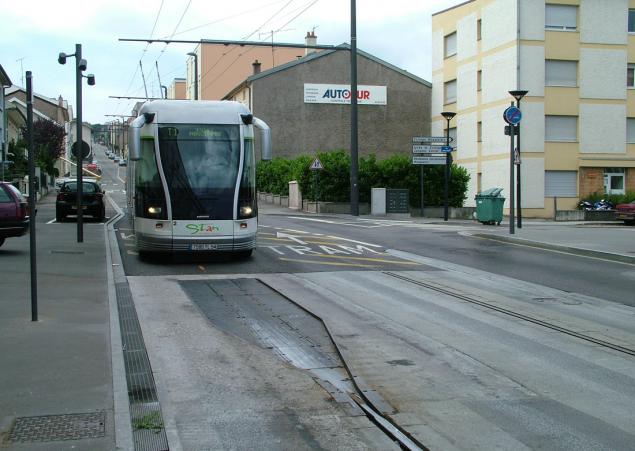
This photo clearly visible guide wheels

The system, though interesting, but very imperfect. March 6, 2001 in the light of a derailment injured three people. March 10 derailments repeated. Derailment occurred at the junction of the vehicle with the stand-alone mode (without guide rail) on the guide mode (with a rail).
After these incidents the system is closed for a year for the repair of vehicles and infrastructure. Reopening of March 13, 2002, but the summer of 2003 the tram track on the tires had to be repaired again after the sixth in a row vanishing vehicle derailed.
So, two modes of operation - "streetcar" and "trolley" we have already seen. But this miracle machine (manufactured by one of the world's leading tram and trolleybus companies Bombardier) is able to travel, and in the third mode - "Bus". This mode is mainly used when necessary to bypass closed for some reason land line
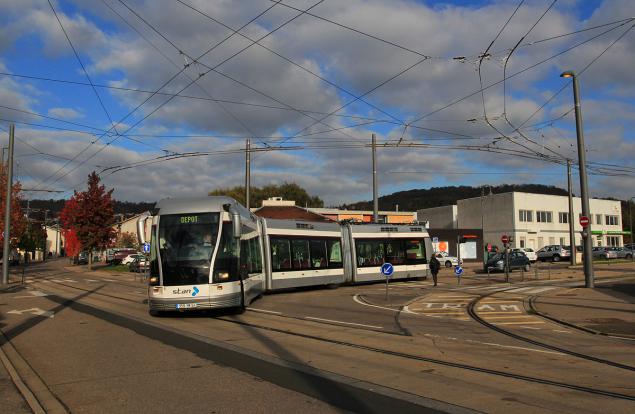
Rail infrastructure is very imperfect, quickly wears out and requires constant current repairs and spets.obsluzhivaniya

Thus, an attempt to combine in one machine just three modes of transport has resulted, as is often the case, not to the full versatility of the machine, and to problems common to all three modes of transport + new problems ...
However, in 2002 the French city of Caen has built a system differs slightly downward flexibility.
In fact - just a tram on the bus and go to the guide rail. This development is designed to get rid of the typical tram vibrations and knocks
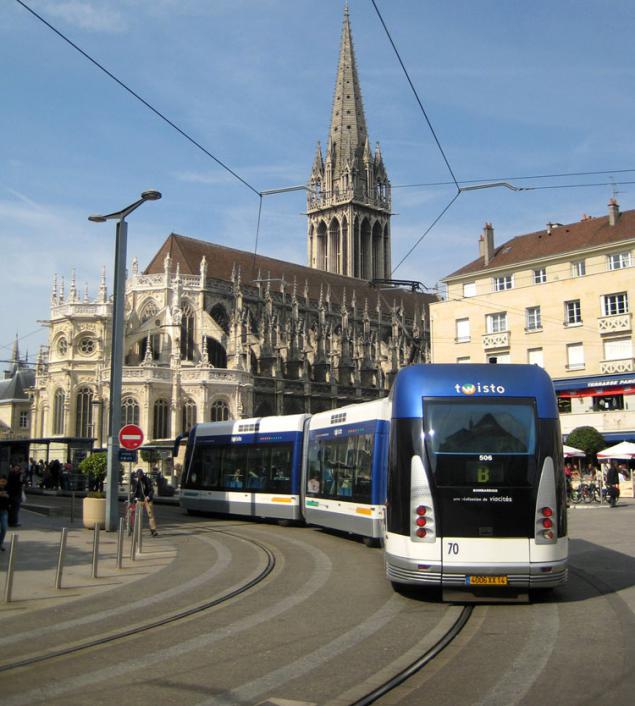
These machines are equipped with diesel generators. From the depot to the route they travel as a regular bus
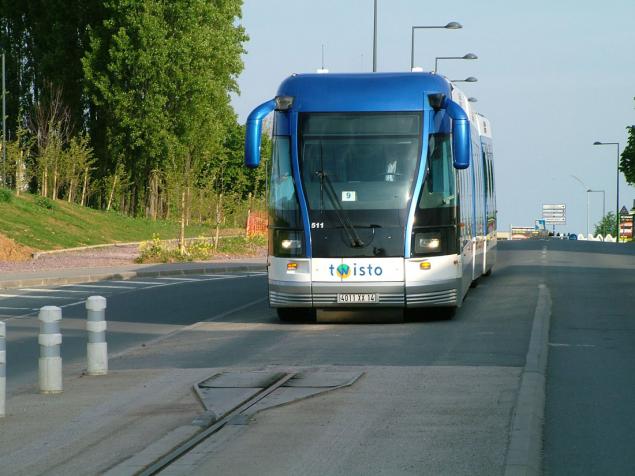
Arriving on the route, I stop the line
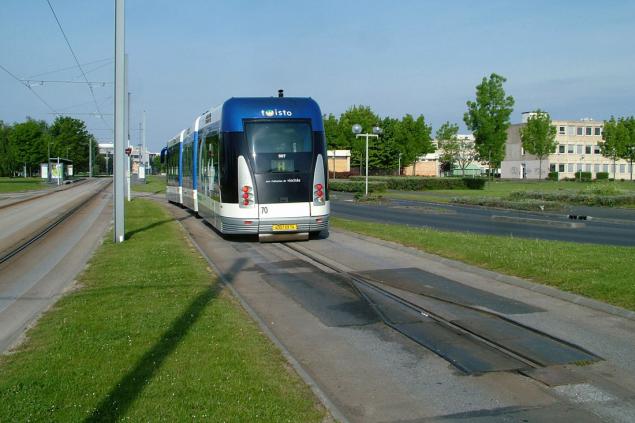
And it turns into a very exotic tram
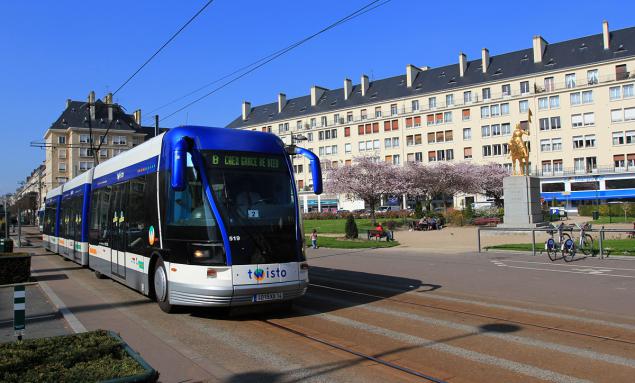
Somehow ...
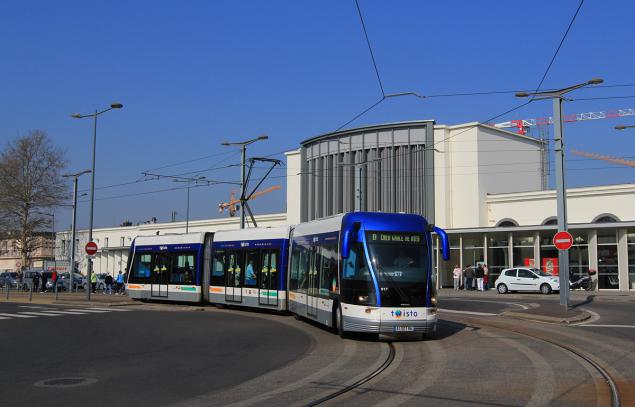
Sam "translohr" appeared in 2006. Translohr classical systems work in Italy, France and China. In contrast to the systems already seen, classic translohr move without a guide rail can not. Moreover, he did not even equipped with a steering
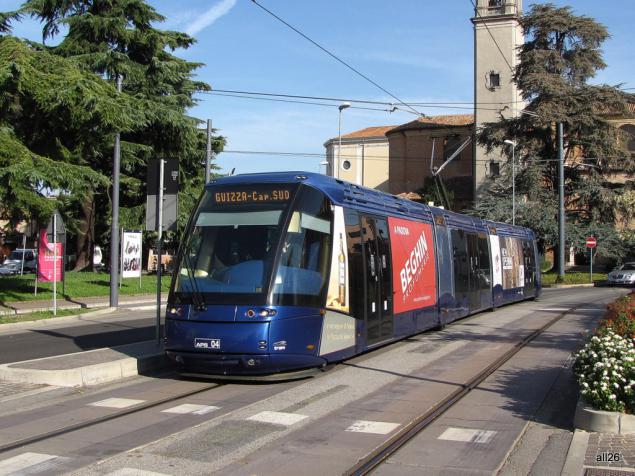
In fact - just a tram on tires

The advantages of this system is considered to be a better grip, as a consequence - the ability to overcome climbs to 13 degrees (instead of the classic tram 6-7 degrees). In addition, the need to rotate translohr curve less than classic tram, radius, which is very important in the narrow streets of European

System classic translohr build and expand still

Construction of the new line in Paris
translohr
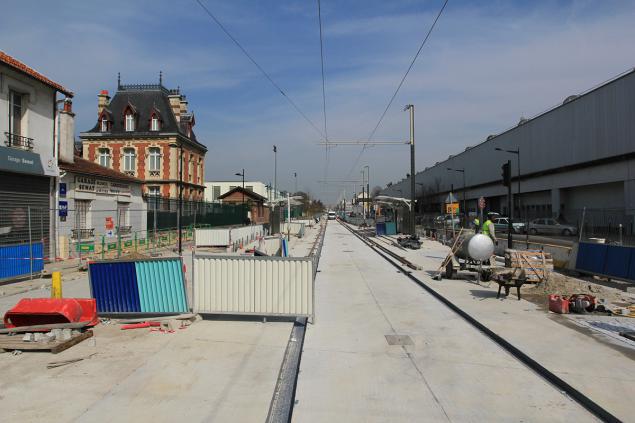
Disadvantages translohr is rather difficult track facilities and the need for a permanent supervisor and minor repairs to the guide rail. Even the crossing of the guide rails must be "switched" in the manner of arrows
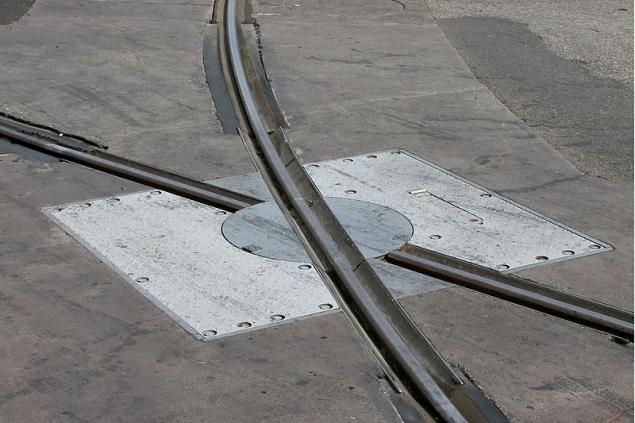
And now, a minute from the same exotic French. The idea shinokopytnogo tram is not new. After all, they have ... shinokopytnoe subway! Yes Yes! Metro line on which cars drive on normal road wheels! Dolly looks like
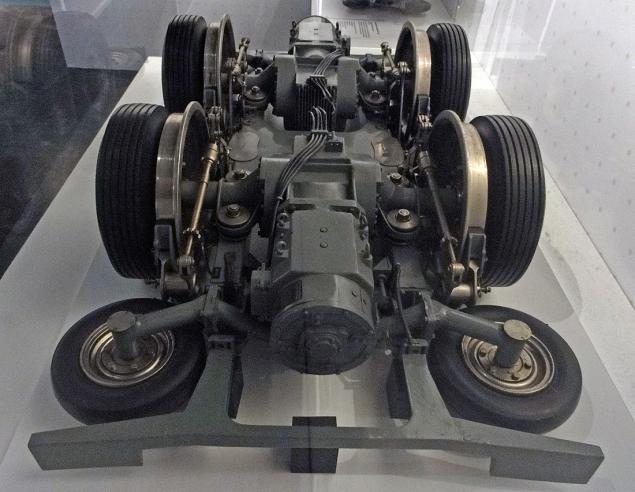
Shinokopotnye first train appeared in Paris in 1951.
Such a miracle the trains run on certain lines of subways in Montreal, Mexico City, Santiago, Paris, Lyon, Marseille. In the subway of Lille, Toulouse, Rennes and Turin are only used rubber wheels!

Unusually, right?
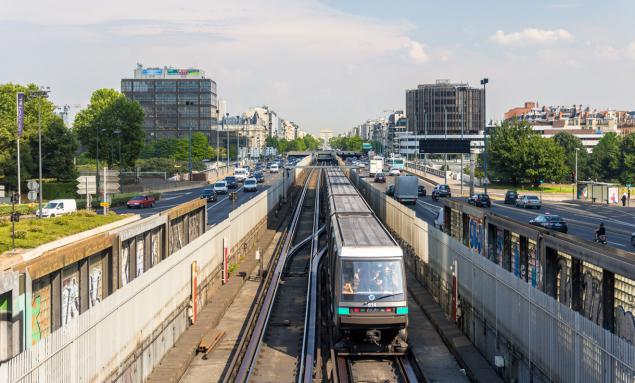
The basic idea - noise reduction and improved adhesion to the "dear»
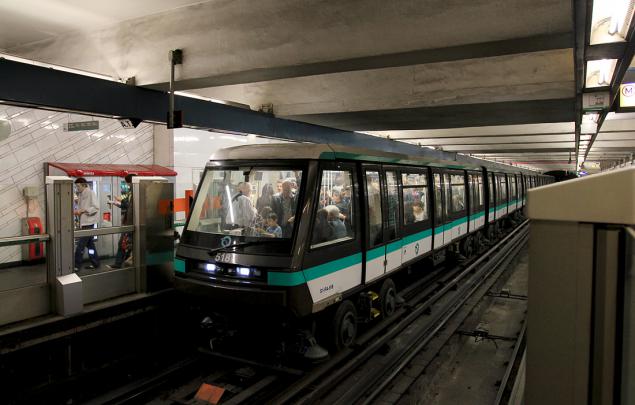
The plan to transfer to a bus move all French line, but renovations were so expensive that only shinokopytnymi steel lines with the most steep climb

Shinokopytnoe subway in Japan

Well, back to translohr, we note that the idea, in general, sensible, but in actual operation is much more minuses than pluses. Because, as he said kazak5354 under my last topic, the best solution - "flies separately, cutlets separately»
That's all, I hope someone was interested

Source:
So. Throughout the world, it is traditionally called "translohr" - in honor of the company, which has made this form of transport known. Interestingly, the company Translohr was not the discoverer of this exotic transport system.
Construction of the first system of this type of transport began in mid-1999 in the French city of Nancy. Inauguration of the system was held on 8 December 2000, but due to technical defects of the regular passenger transport only began in February 2001.
It will be about 20 photos, the source.
Bonus - the metro, you are unlikely to have seen

The idea of the system is that the narrow streets of the center of the huge machines are sent to a particular path by the guide rail at the center of

On the outskirts of the trolley is a regular

The transition from the normal mode is carried out in a guide like this. The driver slowly drove up in a "nest", and guide wheels "drop into" on the rail

This photo clearly visible guide wheels

The system, though interesting, but very imperfect. March 6, 2001 in the light of a derailment injured three people. March 10 derailments repeated. Derailment occurred at the junction of the vehicle with the stand-alone mode (without guide rail) on the guide mode (with a rail).
After these incidents the system is closed for a year for the repair of vehicles and infrastructure. Reopening of March 13, 2002, but the summer of 2003 the tram track on the tires had to be repaired again after the sixth in a row vanishing vehicle derailed.
So, two modes of operation - "streetcar" and "trolley" we have already seen. But this miracle machine (manufactured by one of the world's leading tram and trolleybus companies Bombardier) is able to travel, and in the third mode - "Bus". This mode is mainly used when necessary to bypass closed for some reason land line

Rail infrastructure is very imperfect, quickly wears out and requires constant current repairs and spets.obsluzhivaniya

Thus, an attempt to combine in one machine just three modes of transport has resulted, as is often the case, not to the full versatility of the machine, and to problems common to all three modes of transport + new problems ...
However, in 2002 the French city of Caen has built a system differs slightly downward flexibility.
In fact - just a tram on the bus and go to the guide rail. This development is designed to get rid of the typical tram vibrations and knocks

These machines are equipped with diesel generators. From the depot to the route they travel as a regular bus

Arriving on the route, I stop the line

And it turns into a very exotic tram

Somehow ...

Sam "translohr" appeared in 2006. Translohr classical systems work in Italy, France and China. In contrast to the systems already seen, classic translohr move without a guide rail can not. Moreover, he did not even equipped with a steering

In fact - just a tram on tires

The advantages of this system is considered to be a better grip, as a consequence - the ability to overcome climbs to 13 degrees (instead of the classic tram 6-7 degrees). In addition, the need to rotate translohr curve less than classic tram, radius, which is very important in the narrow streets of European

System classic translohr build and expand still

Construction of the new line in Paris
translohr

Disadvantages translohr is rather difficult track facilities and the need for a permanent supervisor and minor repairs to the guide rail. Even the crossing of the guide rails must be "switched" in the manner of arrows

And now, a minute from the same exotic French. The idea shinokopytnogo tram is not new. After all, they have ... shinokopytnoe subway! Yes Yes! Metro line on which cars drive on normal road wheels! Dolly looks like

Shinokopotnye first train appeared in Paris in 1951.
Such a miracle the trains run on certain lines of subways in Montreal, Mexico City, Santiago, Paris, Lyon, Marseille. In the subway of Lille, Toulouse, Rennes and Turin are only used rubber wheels!

Unusually, right?

The basic idea - noise reduction and improved adhesion to the "dear»

The plan to transfer to a bus move all French line, but renovations were so expensive that only shinokopytnymi steel lines with the most steep climb

Shinokopytnoe subway in Japan

Well, back to translohr, we note that the idea, in general, sensible, but in actual operation is much more minuses than pluses. Because, as he said kazak5354 under my last topic, the best solution - "flies separately, cutlets separately»
That's all, I hope someone was interested

Source:

